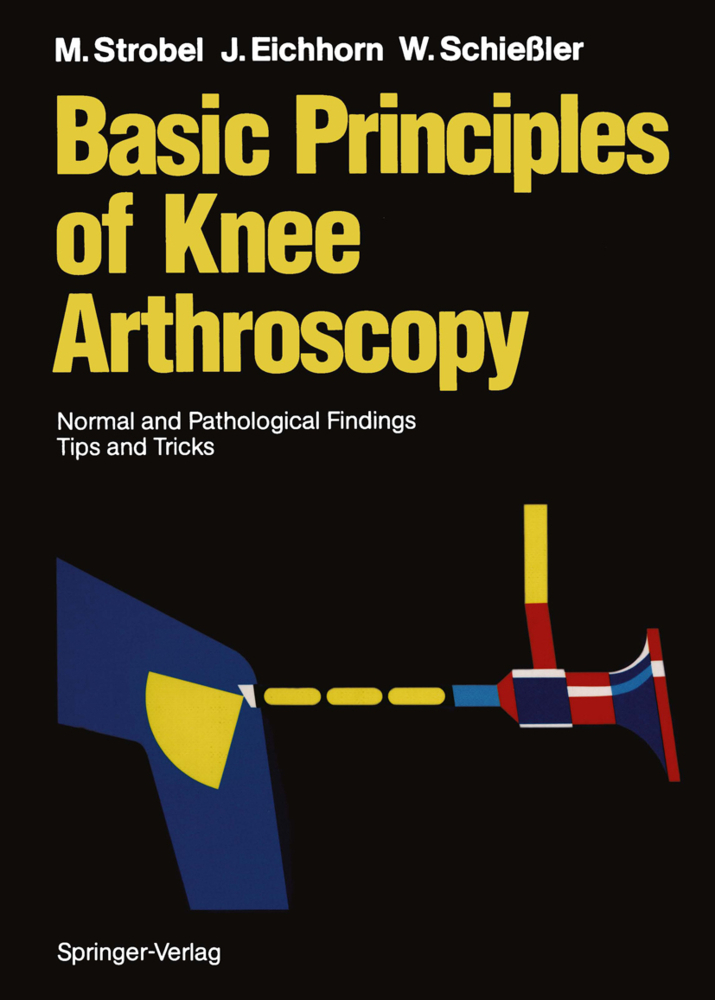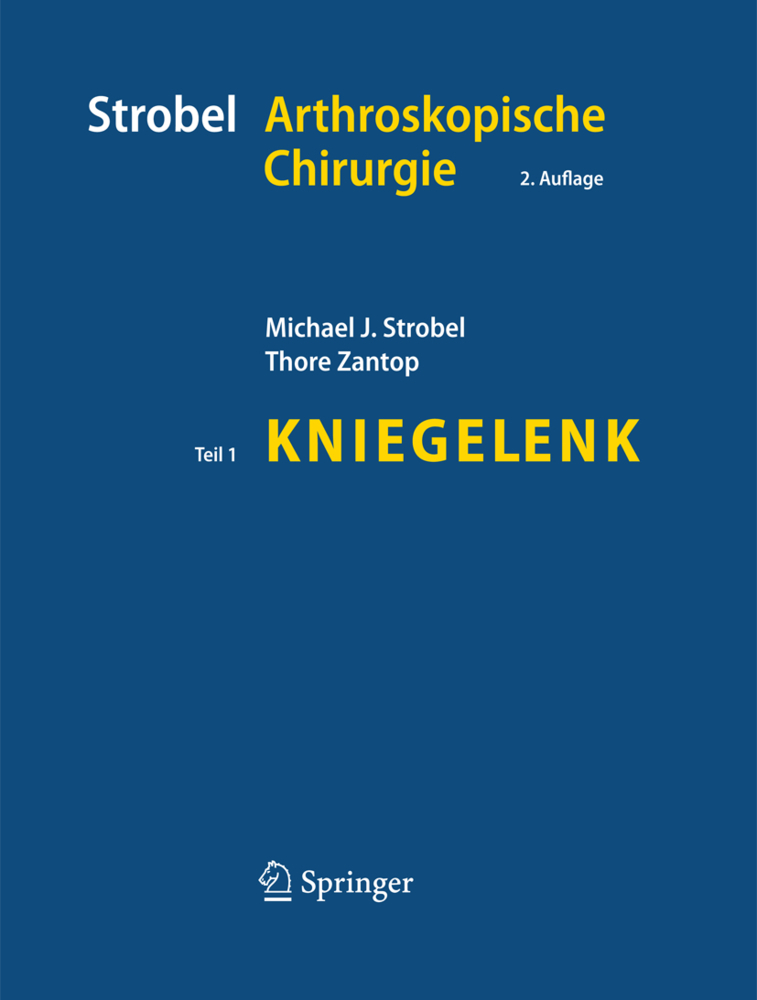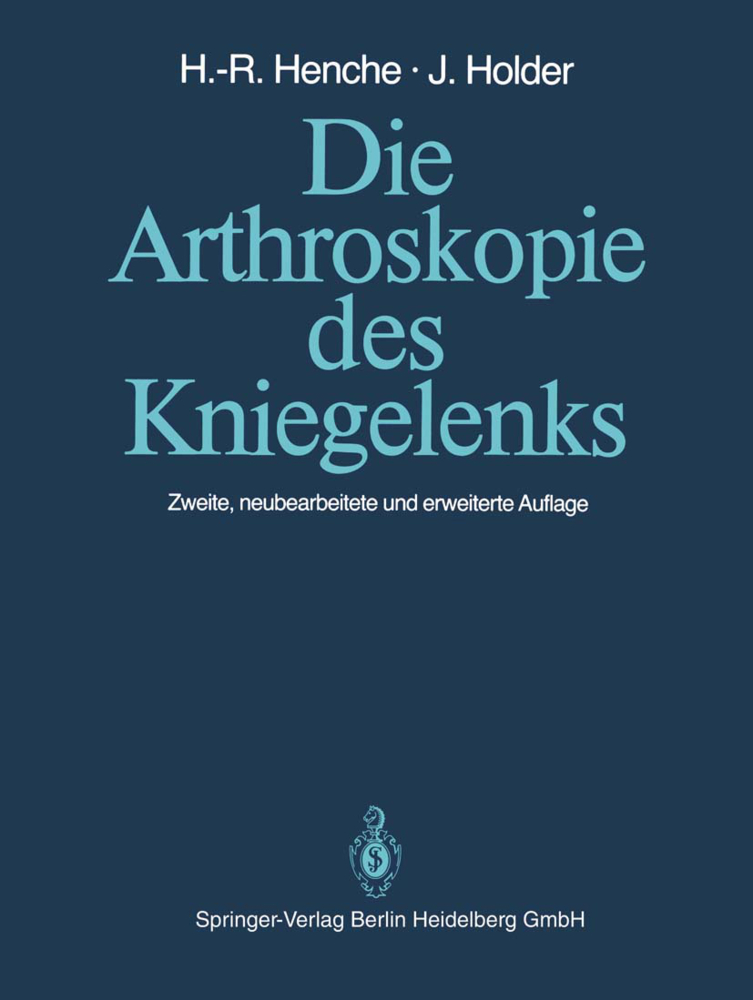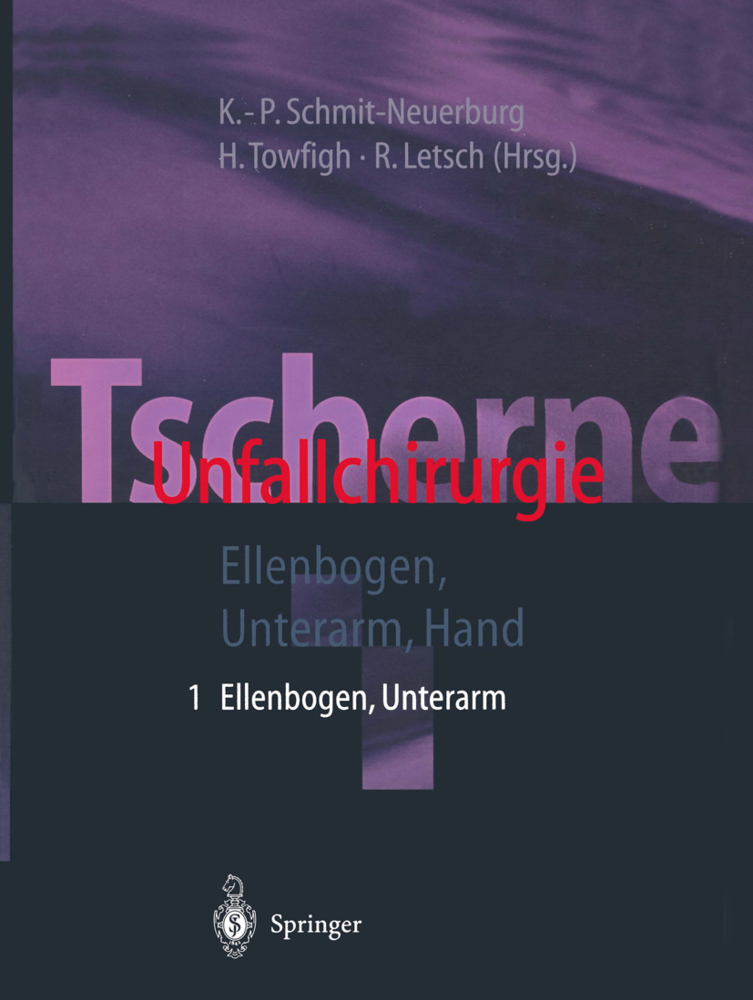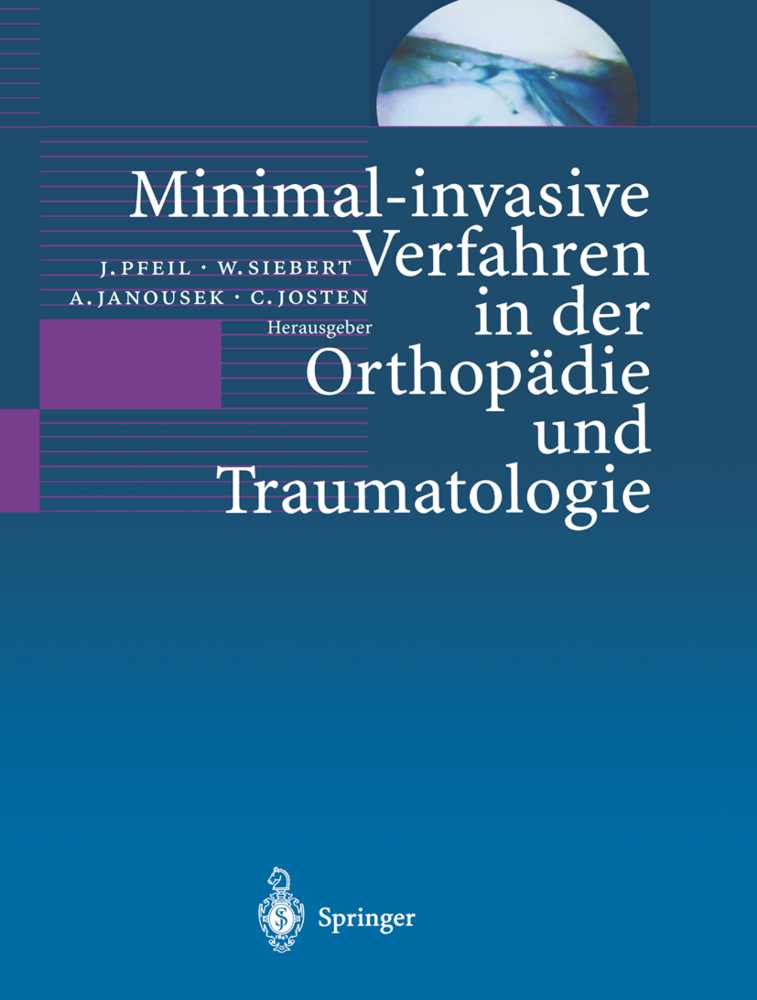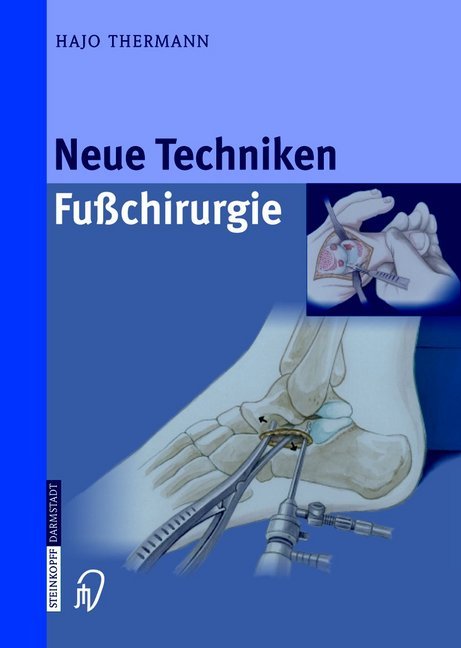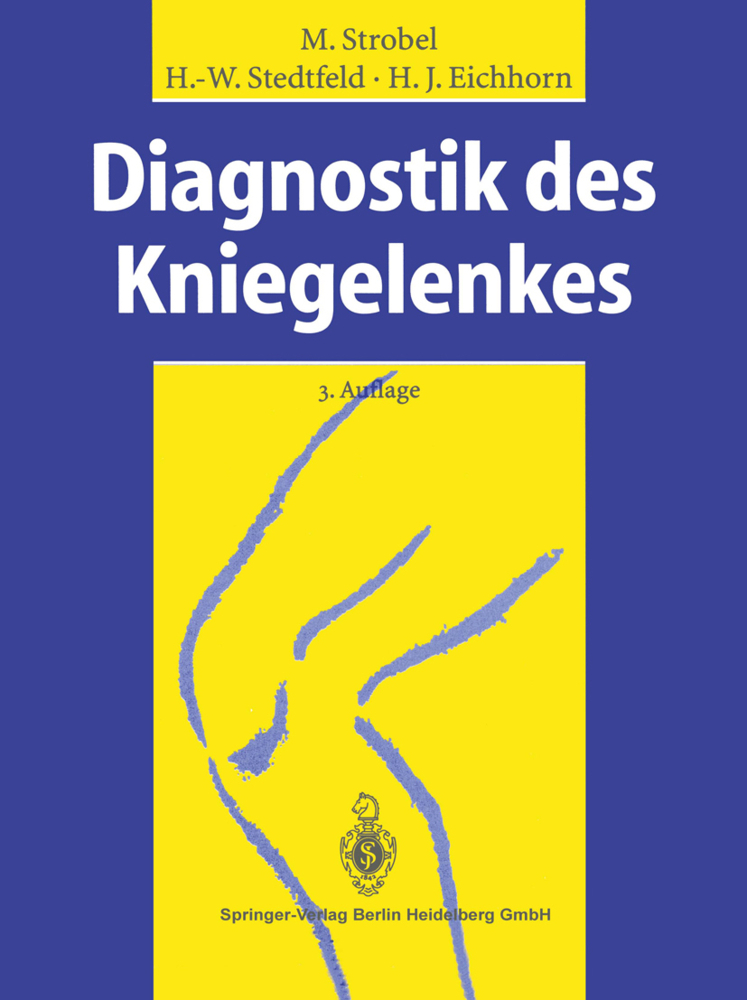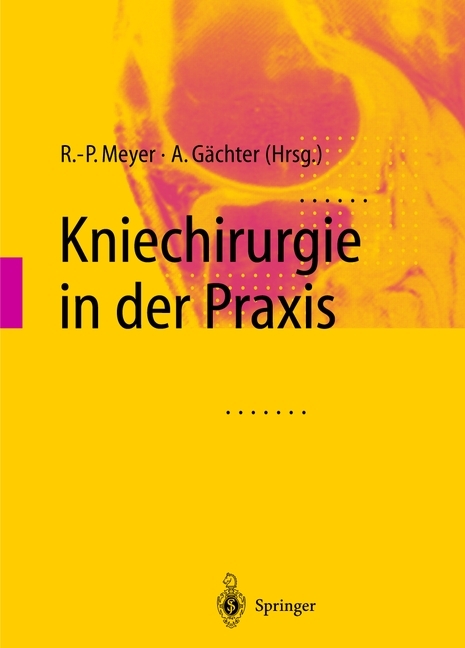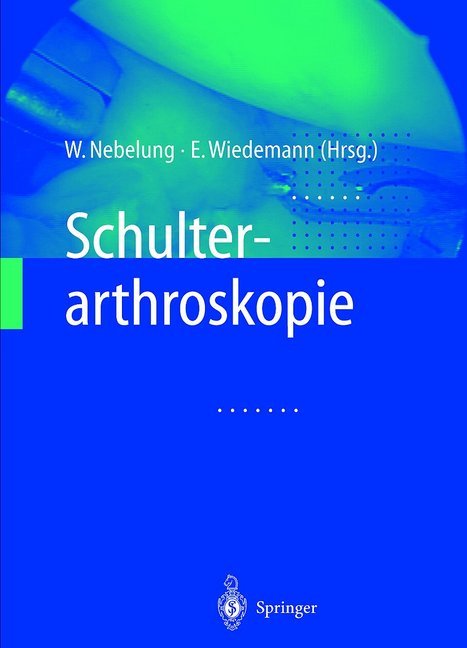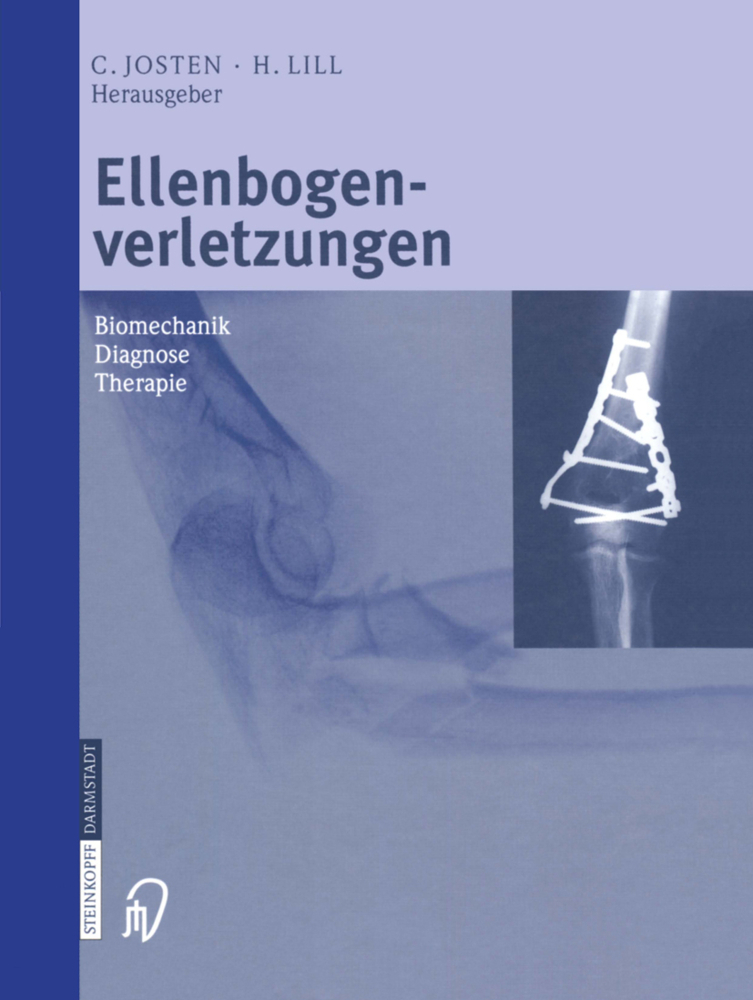Basic Principles of Knee Arthroscopy
Normal and Pathological Findings Tips and Tricks
Basic Principles of Knee Arthroscopy
Normal and Pathological Findings Tips and Tricks
No one suspected in the mid-1970s that endo time mastering video arthroscopy. The older generation must overcome the problems of scopic visualization of the joints would devel op so swiftly into the class of operative proce working abstractly "off the screen" without dures known as arthroscopic surgery. In the looking directly at the joint itself. German-speaking countries arthroscopy was Particular difficulties are encountered by limited in the 1970s to a few operators who colleagues who are faced with the need to underwent a "natural" learning process in perform arthroscopic surgery but are not fa volving arthroscopic inspection, confirmation miliar with diagnostic arthroscopy. Unlike by arthrotomy, and use of the arthroscope to their predecessors, they can no longer follow verify clinical diagnoses. Video technology the natural process of "learning by doing." was not available, so an assistant wanting to They cannot contemplate the joint pathology view the joint interior had to peer through an displayed on the monitor and then check their accessory eyepiece. arthroscopic findings in an open arthrotomy.
1.2 Eugen Bircher
1.3 Kenji Takagi
1.4 Development of Diagnostic Arthroscopy
1.5 Development of Arthroscopic Surgery
1.6 Outlook
2 Indications for Arthroscopy of the Knee Joint
2.1 Diagnostic Indications
2.2 Therapeutic Indications
2.3 Contraindications to Arthroscopy
3 Equipment
3.1 Arthroscope
3.2 Lighting System
3.3 Video System
3.4 Arthroscopic Media
3.5 Irrigation System
3.6 Probing Hook
4 Preparation of the Patient and Equipment
4.1 Anesthesia
4.2 Positioning
4.3 Bloodless Field
4.4 Draping
4.5 Equipment Preparation and Layout
4.6 Facilities
4.7 Care and Maintenance or Arthroscopic Instruments
4.8 Basic Equipment Requirements
5 Preoperative Examination under Anesthesia
6 Portals
6.1 Arthroscope Portal
6.2 Instrument Portals
7 Basic Principles of Arthroscopy
7.1 Movements of the Arthroscope
7.2 Position of the Light Post
7.3 Movements of the Knee
7.4 Direct Manual Maneuvers
7.5 Orientation
7.6 Principle of Triangulation
7.7 Rendezvous Technique
8 Examination Procedure - Normal and Pathologic Findings
8.1 Retropatellar Space
8.2 Suprapatellar Pouch
8.3 Lateral Recess
8.4 Femoropatellar Joint
8.5 Anteromedial Capsule
8.6 Medial Compartment
8.7 Intercondylar Area
8.8 Moving the Leg to the Figure-4 Position
8.9 Lateral Compartment
8.10 Summary
8.11 Completing the Examination
9 The Articular Cartilage - Normal and Pathologic Findings
9.1 Normal Findings
9.2 Chondromalacia
9.3 Degenerative Changes
9.4 Traumatic Cartilage Lesions
9.5 Osteochondritis Dissecans
10 The Synovium - Normal and Pathologic Findings
10.1 Normal Findings
10.2 Posttraumatic Synovial Changes
10.3 Synovial Changes in Rheumatoid Arthritis
10.4 Pigmented Villonodular Synovitis (PVNS)
10.5 Gout and Chondrocalcinosis
10.6 Synovitis Secondary to Psoriasis
10.7 Postarthrotomy Changes and Reactions to Implants
10.8 Synovial Chondromatosis
11 Problems in Arthroscopy
11.1 Poor-Quality Monitor Image
11.2 Inadequate Joint Distention
11.3 Yellow-Out
11.4 Red-Out
11.5 No Picture
11.6 Extravasation of Irrigating Fluid
11.7 Inadequate Visualization of the Joint Compartments
11.8 Visualization of the Posterior Horn of the Medial Meniscus
12 Complications
12.1 Articular Cartilage Damage
12.2 Carrying Particles of the Incise Drape into the Joint
12.3 Instrument Breakage
12.4 Nerve Injuries
12.5 Vascular Injuries
12.6 Ligament and Bone Injuries
12.7 Infection
12.8 Compartment Syndrome
12.9 Hemarthrosis and Postoperative Effusion
12.10 Thromboembolitic Complications
12.11 Synovial Fistula, Synovial Hernia
12.12 Reflex Sympathetic Dystrophy
12.13 Skin Complications
12.14 Lost Tissue Fragments
12.15 Special Complications of Gas Arthroscopy
12.16 Arthroscopy of the "Wrong" Knee
12.17 Other Rare Complications
12.18 Late Complications
13 Patient Information
13.1 Selecting Patients for Arthroscopy
13.2 Preoperative Patient Conduct
13.3 Preoperative Interview
13.4 Postoperative Consultation
14 Documentation
14.1 Written Documentation
14.2 Photographic and Video Documentation
15 Training in Arthroscopy
15.1 Attending an Arthroscopic Course or Workshop
15.2 Practice on a Knee Model
15.3 Visiting an Experienced Arthroscopist
16 Spectrum of Arthroscopic Surgery
16.1 Advantages and Disadvantages of Arthroscopic Surgery
16.2 Arthroscopic Surgical Instruments
16.3 Arthroscopic Surgery
References.
1 Historical Background
1.1 Early Instruments for Endoscopic Examinations1.2 Eugen Bircher
1.3 Kenji Takagi
1.4 Development of Diagnostic Arthroscopy
1.5 Development of Arthroscopic Surgery
1.6 Outlook
2 Indications for Arthroscopy of the Knee Joint
2.1 Diagnostic Indications
2.2 Therapeutic Indications
2.3 Contraindications to Arthroscopy
3 Equipment
3.1 Arthroscope
3.2 Lighting System
3.3 Video System
3.4 Arthroscopic Media
3.5 Irrigation System
3.6 Probing Hook
4 Preparation of the Patient and Equipment
4.1 Anesthesia
4.2 Positioning
4.3 Bloodless Field
4.4 Draping
4.5 Equipment Preparation and Layout
4.6 Facilities
4.7 Care and Maintenance or Arthroscopic Instruments
4.8 Basic Equipment Requirements
5 Preoperative Examination under Anesthesia
6 Portals
6.1 Arthroscope Portal
6.2 Instrument Portals
7 Basic Principles of Arthroscopy
7.1 Movements of the Arthroscope
7.2 Position of the Light Post
7.3 Movements of the Knee
7.4 Direct Manual Maneuvers
7.5 Orientation
7.6 Principle of Triangulation
7.7 Rendezvous Technique
8 Examination Procedure - Normal and Pathologic Findings
8.1 Retropatellar Space
8.2 Suprapatellar Pouch
8.3 Lateral Recess
8.4 Femoropatellar Joint
8.5 Anteromedial Capsule
8.6 Medial Compartment
8.7 Intercondylar Area
8.8 Moving the Leg to the Figure-4 Position
8.9 Lateral Compartment
8.10 Summary
8.11 Completing the Examination
9 The Articular Cartilage - Normal and Pathologic Findings
9.1 Normal Findings
9.2 Chondromalacia
9.3 Degenerative Changes
9.4 Traumatic Cartilage Lesions
9.5 Osteochondritis Dissecans
10 The Synovium - Normal and Pathologic Findings
10.1 Normal Findings
10.2 Posttraumatic Synovial Changes
10.3 Synovial Changes in Rheumatoid Arthritis
10.4 Pigmented Villonodular Synovitis (PVNS)
10.5 Gout and Chondrocalcinosis
10.6 Synovitis Secondary to Psoriasis
10.7 Postarthrotomy Changes and Reactions to Implants
10.8 Synovial Chondromatosis
11 Problems in Arthroscopy
11.1 Poor-Quality Monitor Image
11.2 Inadequate Joint Distention
11.3 Yellow-Out
11.4 Red-Out
11.5 No Picture
11.6 Extravasation of Irrigating Fluid
11.7 Inadequate Visualization of the Joint Compartments
11.8 Visualization of the Posterior Horn of the Medial Meniscus
12 Complications
12.1 Articular Cartilage Damage
12.2 Carrying Particles of the Incise Drape into the Joint
12.3 Instrument Breakage
12.4 Nerve Injuries
12.5 Vascular Injuries
12.6 Ligament and Bone Injuries
12.7 Infection
12.8 Compartment Syndrome
12.9 Hemarthrosis and Postoperative Effusion
12.10 Thromboembolitic Complications
12.11 Synovial Fistula, Synovial Hernia
12.12 Reflex Sympathetic Dystrophy
12.13 Skin Complications
12.14 Lost Tissue Fragments
12.15 Special Complications of Gas Arthroscopy
12.16 Arthroscopy of the "Wrong" Knee
12.17 Other Rare Complications
12.18 Late Complications
13 Patient Information
13.1 Selecting Patients for Arthroscopy
13.2 Preoperative Patient Conduct
13.3 Preoperative Interview
13.4 Postoperative Consultation
14 Documentation
14.1 Written Documentation
14.2 Photographic and Video Documentation
15 Training in Arthroscopy
15.1 Attending an Arthroscopic Course or Workshop
15.2 Practice on a Knee Model
15.3 Visiting an Experienced Arthroscopist
16 Spectrum of Arthroscopic Surgery
16.1 Advantages and Disadvantages of Arthroscopic Surgery
16.2 Arthroscopic Surgical Instruments
16.3 Arthroscopic Surgery
References.
Strobel, Michael
Eichhorn, Heinz-Jürgen
Schießler, Wilfried
Klein, Willemijn M.
Telger, T. C.
| ISBN | 978-3-642-76331-1 |
|---|---|
| Artikelnummer | 9783642763311 |
| Medientyp | Buch |
| Copyrightjahr | 2012 |
| Verlag | Springer, Berlin |
| Umfang | XIII, 253 Seiten |
| Abbildungen | XIII, 253 p. 99 illus. |
| Sprache | Englisch |

